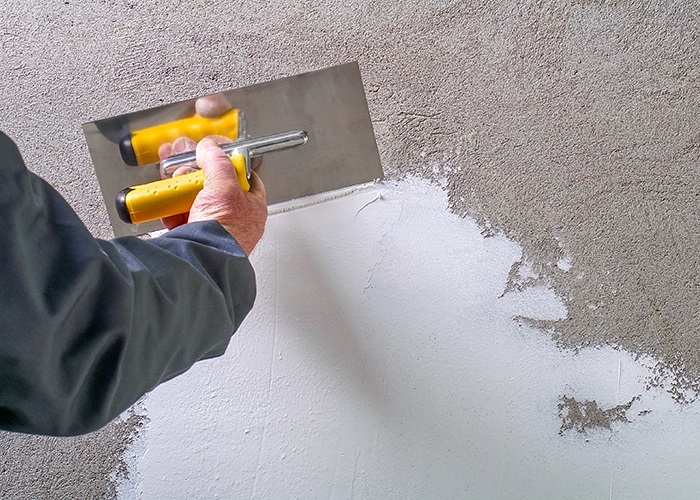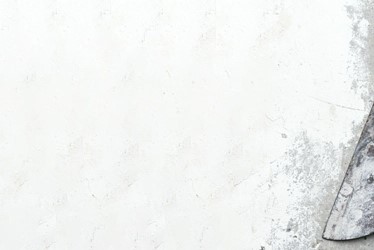Skim coat mortar is a thin layer of cementitious material applied to the surface of a wall or ceiling. It is typically used to smooth out imperfections such as bumps, roughness, or minor cracks, creating a more even and attractive finish before painting or wallpapering. Skim coat mortar is crucial in construction and renovation projects as it enhances the aesthetic appeal of surfaces by providing a uniform texture and appearance. Beyond aesthetics, it also serves functional purposes by improving the durability and longevity of the surface, as well as ensuring a better bond for subsequent layers of paint or other finishes.
Skim coat mortar uses
1. Wall Smoothing and Leveling: Skim coat mortar is frequently used in construction and renovation to achieve a smooth and level finish on walls and ceilings. It helps cover minor imperfections such as bumps, small cracks, or uneven textures left after initial plastering or drywall installation.
2. Surface Preparation: Before painting or wallpapering, applying a skim coat ensures the surface is uniform, enhancing the aesthetic appeal of the final finish. It provides a clean canvas by filling in gaps and creating an even base for subsequent treatments.
3. Repairing Surface Imperfections: Skim coat mortar is used to repair damaged areas of existing plaster or drywall. It can fill holes, cover patches, and blend uneven surfaces seamlessly, restoring the integrity and appearance of the wall or ceiling.
4. Enhancing Adhesion: When applied thinly, skim coat mortar improves the adhesion of subsequent layers of paint, wallpaper, or tile adhesive. This is particularly useful in ensuring that finishes adhere properly and last longer.
5. Decorative Finishes: In interior design and architectural applications, skim coat mortar can be used to create decorative textures or patterns on walls and ceilings. By manipulating the application technique, different textures such as swirls, stippling, or smooth finishes can be achieved.
6. Waterproofing and Sealing: Some specialized skim coat mortars are formulated to provide additional moisture resistance and durability. These are used in areas prone to dampness such as bathrooms, kitchens, or exterior walls to enhance the longevity of the surface.
7. Exterior Finishes: While less common, skim coat mortars suitable for exterior use can be applied to facades to repair minor imperfections, enhance weather resistance, and prepare the surface for painting or other finishes.
Advantages of skim coat mortar
- Provides a smooth and level finish on walls and ceilings.
- Hides imperfections and enhances the aesthetic appeal of surfaces.
- Versatile for interior and exterior applications on various substrates.
- Quick drying time compared to thicker coats.
- Easy to apply by hand or with a trowel.
- Cost-effective solution for surface repairs and upgrades.
- Improves adhesion of subsequent layers like paint or wallpaper.
- Effective in filling minor cracks and holes.
- Environmentally friendly options available.
- Supports decorative finishes and textures.
Types of skim coat mortars
1. Gypsum-Based Skim Coat Mortar:
Gypsum-based skim coat mortar is widely used for interior applications, particularly on drywall and plaster surfaces. It consists primarily of gypsum powder mixed with additives that enhance workability and bonding properties. This type of mortar is valued for its smooth finish and ease of application, making it ideal for covering minor imperfections such as dents, bumps, and small cracks. Gypsum-based skim coats are relatively easy to sand, allowing for precise adjustments to achieve a flawless surface before painting or wallpapering. However, they are not suitable for wet areas or exterior use where prolonged exposure to moisture could compromise their integrity. They are popular in residential and commercial settings where a smooth, uniform appearance is desired on walls and ceilings.

2. Cement-Based Skim Coat Mortar:
Cement-based skim coat mortar is known for its versatility and durability, making it suitable for both interior and exterior applications. It typically consists of cement, fine aggregates, and sometimes additives like polymers for improved flexibility and adhesion. This type of skim coat provides a strong, hard-wearing finish that can withstand weather exposure and mechanical stress better than gypsum-based mortars. It is commonly used on concrete, masonry, and plaster surfaces to achieve a smooth, level base for painting or decorative finishes. Cement-based skim coats are preferred in environments where resilience to moisture and temperature variations is essential, such as in bathrooms, kitchens, and exterior facades.

3. Polymer-Modified Skim Coat Mortar:
Polymer-modified skim coat mortar combines traditional cement or gypsum binders with polymer additives such as acrylics or other synthetic resins. These additives enhance the mortar’s properties, including adhesion, flexibility, and water resistance. Polymer-modified skim coats offer superior performance in both indoor and outdoor settings, adhering well to various substrates like concrete, plaster, and drywall. They are particularly suitable for areas prone to movement or vibration, as they can withstand minor substrate shifts without cracking. These mortars are often used in renovation projects where enhancing the durability and longevity of surfaces is crucial. They provide a smooth, resilient finish that can be painted or textured after application.

4. Acrylic-Based Skim Coat Mortar:
Acrylic-based skim coat mortar utilizes acrylic resins as the primary binder, offering excellent adhesion, flexibility, and resistance to cracking. This type of skim coat is suitable for both interior and exterior applications where durability and weather resistance are paramount. Acrylic-based mortars adhere well to a variety of substrates and are often used to repair and enhance surfaces before painting or applying decorative finishes. They are easy to apply and maintain their appearance over time, making them a popular choice in commercial and residential projects. Acrylic-based skim coats provide a durable, smooth base that enhances the aesthetic and functional properties of walls and ceilings.

5. Specialized Skim Coat Mortars:
Specialized skim coat mortars are formulated to meet specific project requirements or address unique challenges. These formulations may include additives or aggregates tailored for purposes such as repairing stucco surfaces, enhancing fire resistance, or improving thermal insulation properties. They are used in niche applications where standard skim coat mortars may not suffice due to specific environmental conditions, substrate requirements, or desired functional properties. Specialized skim coats are designed to provide targeted solutions, ensuring optimal performance and durability in specialized construction and renovation projects.

Applications of skim coat mortar
- Residential Buildings
- Offices and Commercial Buildings
- Hotels
- Retail Stores
- Educational Facilities
- Healthcare Facilities
- Public Buildings
- Industrial Facilities etc.
Applications method of skim coat mortar
1. Surface Preparation
Before applying skim coat mortar, ensure that the surface is clean, dry, and free from dust, grease, and loose particles. Repair any cracks or holes using appropriate fillers or patching compounds. It’s essential to prime the surface if recommended by the manufacturer to improve adhesion and ensure uniform absorption.
2. Mixing the Skim Coat Mortar
Follow the manufacturer’s instructions to mix the skim coat mortar. Use clean water and gradually add the powder while stirring to achieve a lump-free consistency. Use a drill with a paddle attachment for larger batches or mix by hand for smaller quantities. Avoid overmixing, as it can shorten the working time of the mortar.
3. Application Tools
Depending on the area and desired finish, you can apply skim coat mortar using a stainless steel trowel, a drywall knife, or a special smoothing blade. For larger areas, a paint roller with a thick nap can be used to apply the mortar evenly before smoothing it out with a trowel.
4. Applying the Skim Coat
Start applying the skim coat mortar in thin layers, typically about 1-3 mm thick. Begin at the bottom of the wall or surface and work your way up to ensure even coverage. Use smooth, overlapping strokes to spread the mortar evenly. Avoid applying too thick a layer in one go, as it can lead to cracking or uneven drying.
5. Smoothing and Leveling
After applying the skim coat mortar, immediately go back over the surface with the trowel or smoothing tool to smooth and level the mortar. Work in small sections, applying light pressure to flatten the surface and remove excess mortar. Keep the edges of each section feathered to blend seamlessly with adjacent areas.
6. Drying and Curing
Allow the skim coat mortar to dry according to the manufacturer’s instructions. Typically, this involves letting it cure for 24 hours or more, depending on humidity and temperature conditions. Avoid disturbing the surface during this time to prevent imperfections.
7. Finishing Touches
Once the skim coat mortar is completely dry, inspect the surface for any imperfections or rough spots. Lightly sand any rough areas with fine-grit sandpaper to achieve a smooth finish suitable for painting, wallpapering, or applying other decorative finishes.
8. Clean-Up
Clean tools and equipment immediately after use with water before the mortar hardens. Dispose of any leftover skim coat mortar according to local regulations.
Conclusion
Skim coat mortar stands as a versatile and indispensable material in the realm of construction and renovation. Its ability to achieve smooth, level surfaces on various substrates such as drywall, plaster, concrete, and masonry makes it a fundamental component in enhancing both the aesthetic appeal and structural integrity of buildings. As construction practices evolve, skim coat mortar continues to adapt, offering solutions that meet the demands of modern architecture and design.

